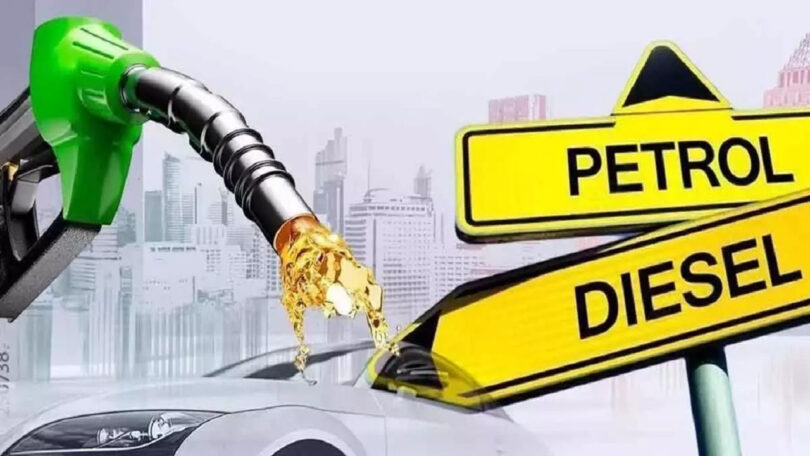Nepal, a landlocked nation, heavily relies on diesel and petrol for its transportation and industrial sectors. The dynamic nature of fuel like diesel and petrol price in Nepal significantly influences the country’s economic stability and the daily life of its citizens. Understanding the current trends and diesel and petrol prices in Nepal is crucial for both individuals and businesses.
Table of Contents
Latest Diesel and Petrol Price in Nepal Today
The table below represents the latest diesel and petrol prices across major cities in Nepal:
| Fuel Type | Quantity | Price in Nepal (NRs.) |
|---|---|---|
| Petrol(*MS) | per litre | 167.5 |
| Diesel(*HSD) | per litre | 157.5 |
| Kerosene(*SKO) | per litre | 157.5 |
| LP Gas – 14.2 kg | per cylinder | 1895.0 |
| Aviation Turbine Fuel | per liter | Rs. 136.0/L(Duty Paid) |
| Aviation Turbine Fuel(Jet A-1) | per Kilolitre | US$ 1035/KL (Bonded) |
| Kathmandu/Pokhara/Dipayal – (Price applicable within 15km of NOC depot/sales office) | ||
*Abbreviations:
MS – Motor Spirit
HSD – High-Speed Diesel
SKO – Superior Kerosene Oil
LP – Liquefied Petroleum
List of Depot Stations of Nepal Oil Corporation (NOC)
- Amlekhgunj Depot
- Thankot Depot
- Jhapa Depot
- Janakpur Depot
- Hetauda Depot
- Pokhara Depot
- Nepalgunj Depot
- Biratnagar Depot
- Birgunj Depot
- Butwal Depot
- Dhangadhi Depot
- Bardibas Depot
- Kohalpur Depot
- Bhairahawa Depot
- Birtamode Depot
- Ghorahi Depot
- Rajbiraj Depot
- Gulariya Depot
- Lahan Depot
- Surkhet Depot
Factors Influencing Diesel and Petrol Prices in Nepal
Several factors contribute to the fluctuating prices of diesel and petrol in Nepal. The global oil market plays a significant role, as Nepal imports a substantial portion of its fuel. Political instability in oil-producing countries, international market trends, and supply-demand dynamics directly impact the cost.
Additionally, government policies, including taxes and subsidies, significantly affect fuel prices. The Nepalese government’s approach to managing fuel imports and its taxation policies are key elements in determining the final price paid by consumers.
Historical Trends in Fuel Prices in Nepal
An analysis of historical data reveals the trends in fuel prices over the past decade.

This graph illustrates the ups and downs in diesel and petrol prices, highlighting the periods of significant changes. Factors such as the global economic crisis, regional political events, and changes in government policies in Nepal are reflected in these trends.
Impact of Fuel Prices on the Economy and Daily Life in Nepal
The fluctuation in diesel and petrol prices has a domino effect on various sectors of the economy. Transportation costs, which are directly tied to fuel prices, influence the prices of goods and services. This, in turn, affects the country’s overall inflation rate.
For the average Nepalese household, rising fuel prices mean an increased cost of living as commuting and goods become more expensive. This strain on household budgets can lead to shifts in spending habits and lifestyle changes.
Comparative Analysis with Neighboring Countries
In comparison to its neighbors, such as India and China, Nepal’s fuel prices are influenced by different factors due to its landlocked geography and dependency on imports. The table below compares the average diesel and petrol prices in these countries:
| Country | Diesel (per liter) | Petrol (per liter) |
|---|---|---|
| Nepal | NPR XX.XX | NPR XX.XX |
| India | INR XX.XX | INR XX.XX |
| China | CNY XX.XX | CNY XX.XX |
| Pakistan |
Future Predictions and Trends
Experts predict that fuel prices will continue to be influenced by global and regional economic conditions. Nepal’s increasing demand for fuel, coupled with its reliance on imports, makes it susceptible to international market fluctuations.
Potential governmental interventions, such as revised taxation policies or subsidies, could also play a role in stabilizing or changing the current price trends.
Tips for Consumers
Consumers can adopt several strategies to manage their fuel expenses more effectively. Opting for public transportation, carpooling, and considering fuel-efficient vehicles are practical options. Additionally, exploring alternative energy sources, such as electric vehicles, can offer long-term benefits.
Conclusion
Keeping abreast of the latest diesel and petrol prices in Nepal is essential for planning and budgeting purposes. The factors influencing these prices are complex and interconnected, affecting not only the economy but also the daily lives of individuals. By understanding these dynamics, consumers and businesses can make more informed decisions.

